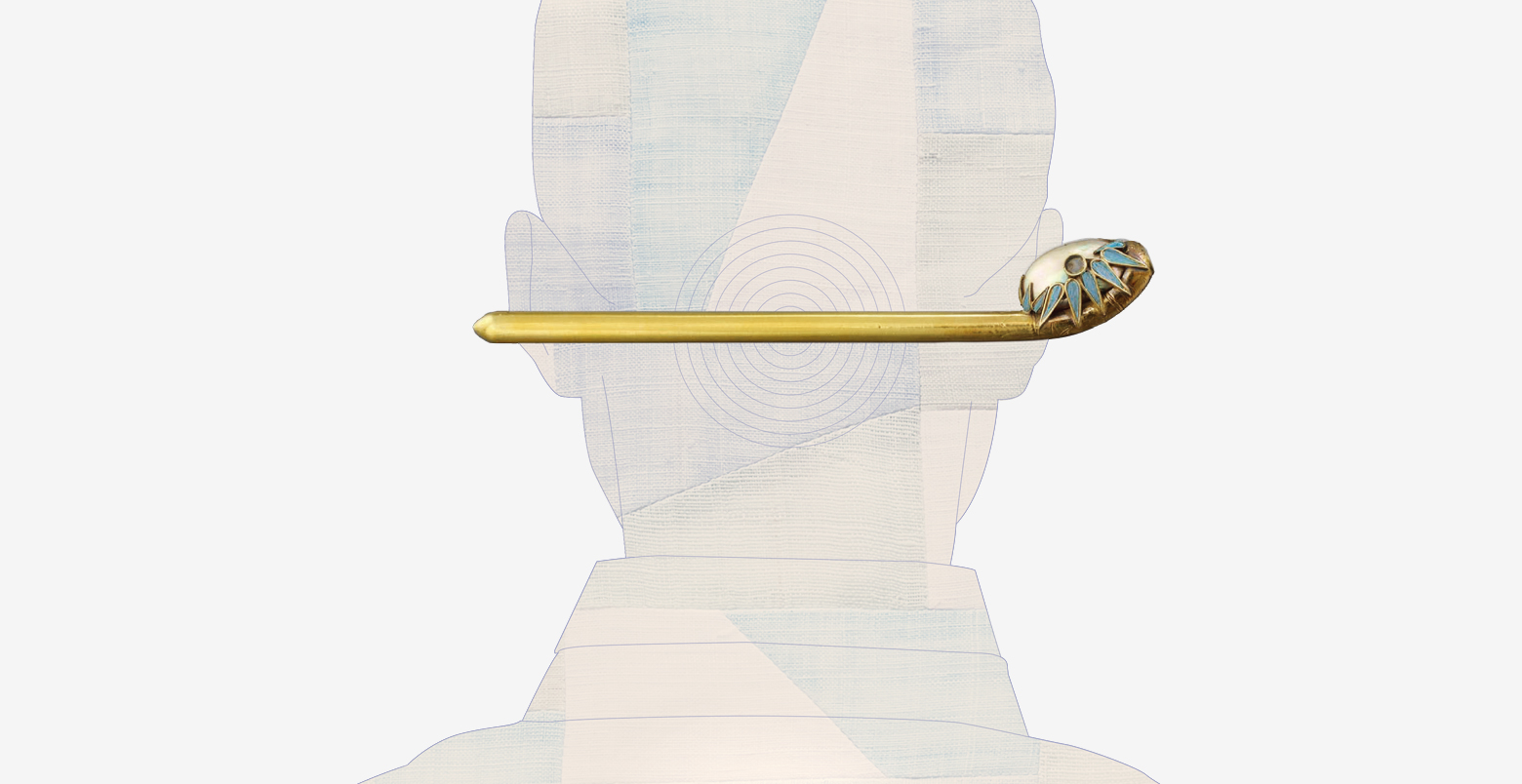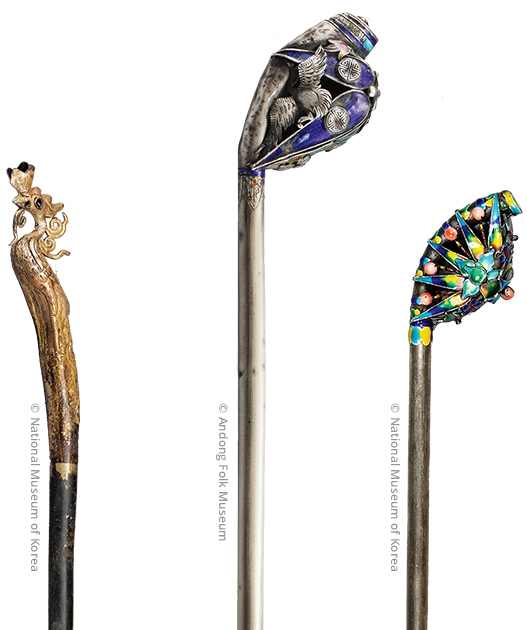
Contents





“Most Remarkable Rebellion”





Design · Written by Lee Eun-yi, designer & writer
Binyeo
Ornamental Hair Pin Exhibiting Wishes
Korea’s ancestors highly valued and took care of their bodies, hair and skin because they considered
them gifts from their parents. In the past, both men and women did not cut their hair,
braided their long hair for formal occasions and brushed it into neat buns for weddings.
Binyeo, a traditional ornamental hairpin, was used to hold the bun in place.
Other than its practicality, this item today lacks the attention it deserves as a traditional fashion piece,
but to Koreans as far back as ancient times, they considered it more than an accessory
because of the meaning that the hairpin’s beautiful and stylish element held for the wearer.

The hairpin of Korea’s last Crown Princess Uimin, Yi Bang-ja, is sculpted with pearl in the center surrounded by bamboo leaves. © National Palace Museum of Korea
According to the historical record “The History of the Three Kingdoms,” binyeo is assumed to have been used since the Three Kingdoms’ period (57 B.C.E-668 C.E.). During the Silla Dynasty (57 B.C.E-935 C.E.), decorations were considered extravagant and thus their use was restricted. During the Joseon Dynasty (1392-1910), however, the big wig gache was banned and made way for hair buns, which expanded the variety of binyeo. Despite having many names, binyeo of the usual stick-shaped version was called gye or jam. In the 15th century, a coming-of-age ceremony in which an engaged woman made a hair bun was also called gye-rye, or “binyeo ceremony” in English.
The variety of materials used to make binyeo included gold, silver, jade, pearl, brass, bronze, wood, coral and animal bones or horns; each material symbolized social hierarchy or an occasion. For example, the social elite wore hairpins made of gold, silver or jade, while commoners wore those made from wood or animal bones or horns. Black wooden or horn binyeo were made for widows. Commoners wore binyeo 10-20 cm long except at weddings, where a 30 cm-long hairpin was allowed. Binyeo was a valuable heirloom that was passed down to the next generation of women in a family.

This binyeo was made in the Joseon era (1392-1910). © National Folk Museum of Korea
Jamdu: Providing Artistic Flair
Jamdu, the convex part at the end of a binyeo, is the highlight of the hairpin’s artistic design. Along with its practical function to tie up hair, jamdu is beautifully crafted into many shapes and materials. The hairpin of Korea’s last Crown Princess Uimin, Yi Bang-ja, was meticulously sculpted with dragon scales and mane. Its eyes were made of pearl, the dragon’s magic bead—believed to give the mythical creature its supernatural powers—was made of wax and the body was coated in gold. Bumpy and irregular shapes of coral and pearl were used without modification to accentuate their natural beauty.
Divine fauna and flora craft in jamdu was believed to cast away evil spirits and attract wealth, fertility and longevity. Bamboo and apricot flowers were also symbols of a woman’s fidelity. Interestingly, Koreans worshiped binyeo in the hope of protecting their villages and securing a family’s wellbeing. White and green jade were used in summer, plum flowers, bamboo leaves and peony in spring and fall, and the Seven Treasures of Buddhism and dragon in winter. Young women used jade, and as they got older, the golden binyeo they used indicated dignity and pride earned over time. The hairpin was also a medium for lovers to meet. In that sense, binyeo in the past was not simply a functional hair accessory but the manifestation of wishes and desires of Koreans.

This binyeo (middle) is assumed to have been used by a noble family of Joseon.
Eye catching vibrant colors of the binyeo (right)
Other Articles





“Most Remarkable Rebellion”










